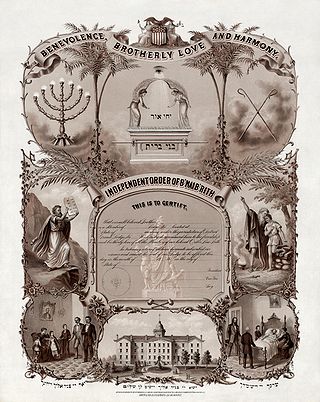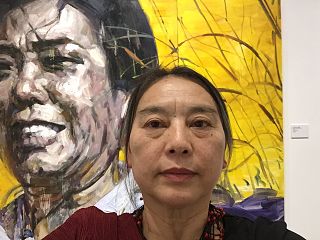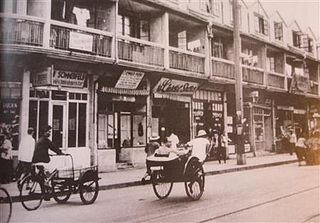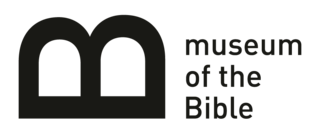
Shanghai is one of the four direct-administered municipalities of China. The city is located on the southern estuary of the Yangtze River, with the Huangpu River flowing through it. The population of the city proper is the third largest in the world, with around 29.2 million inhabitants in 2023, while the urban area is the most populous in China, with 39.3 million residents. As of 2022, the Greater Shanghai metropolitan area was estimated to produce a gross metropolitan product (nominal) of nearly 13 trillion RMB. Shanghai is one of the world's major centers for finance, business and economics, research, science and technology, manufacturing, transportation, tourism, and culture. The Port of Shanghai is the world's busiest container port.

B'nai B'rith International is a 501(c)(3) nonprofit Jewish service organization and was formerly a German Jewish cultural association. B'nai B'rith states that it is committed to the security and continuity of the Jewish people and the State of Israel and combating antisemitism and other forms of bigotry.
Jews and Judaism in China are predominantly composed of Sephardi Jews and their descendants. Other Jewish ethnic divisions are also represented, including Ashkenazi Jews, Mizrahi Jews and a number of converts.

The United States Holocaust Memorial Museum (USHMM) is the United States' official memorial to the Holocaust. Adjacent to the National Mall in Washington, D.C., the USHMM provides for the documentation, study, and interpretation of Holocaust history. It is dedicated to helping leaders and citizens of the world confront hatred, prevent genocide, promote human dignity, and strengthen democracy.

Washington, D.C.'s Chinatown is a small, historic area of Downtown Washington, D.C. along H and I Streets between 5th and 8th Streets, Northwest. The area was once home to thousands of Chinese immigrants, but fewer than 300 remained in 2017. The current neighborhood was the second in Washington to be called “Chinatown” since 1931. Originally, the first Chinatown was built in the Federal Triangle on the south side of Pennsylvania Avenue some time after 1851, but was moved to the H Street area when a new federal building was built there. In 1986, a Chinese gate was built over H Street at 7th Street. By 1997, prominent landmarks such as the Capital One Arena, a sports and entertainment arena, occupied the area. The neighborhood is served by the Gallery Place station of the Washington Metro.

The National Museum of American History: Kenneth E. Behring Center is a historical museum in Washington, D.C. It collects, preserves, and displays the heritage of the United States in the areas of social, political, cultural, scientific, and military history. Among the items on display is the original Star-Spangled Banner. The museum is part of the Smithsonian Institution and located on the National Mall at 14th Street and Constitution Avenue NW in Washington, D.C.

MS St. Louis was a diesel-powered passenger ship properly referred to with the prefix MS or MV, built by the Bremer Vulkan shipyards in Bremen for HAPAG, better known in English as the Hamburg America Line. The ship was named after the city of St. Louis, Missouri. Her sister ship, MS Milwaukee, was also a diesel powered motor vessel owned by the Hamburg America Line. St. Louis regularly sailed the trans-Atlantic route from Hamburg to Halifax, Nova Scotia, and New York City, and made cruises to the Canary Islands, Madeira, Spain; and Morocco. St. Louis was built for both transatlantic liner service and for leisure cruises.

The Austrian Service Abroad is a non-profit organization funded by the Austrian government which sends young Austrians to work in partner institutions worldwide serving Holocaust commemoration in form of the Gedenkdienst, supporting vulnerable social groups and sustainability initiatives in form of the Austrian Social Service and realizing projects of peace within the framework of the Austrian Peace Service. The Austrian Service Abroad is the issuer of the annually conferred Austrian Holocaust Memorial Award.

Hung Liu (劉虹) was a Chinese-born American contemporary artist. She was predominantly a painter, but also worked with mixed-media and site-specific installation and was also one of the first artists from China to establish a career in the United States.
Recorded Jewish history in the Philippines started during the Spanish period.

The Shanghai Ghetto, formally known as the Restricted Sector for Stateless Refugees, was an area of approximately one square mile (2.6 km2) in the Hongkou district of Japanese-occupied Shanghai. The area included the community around the Ohel Moshe Synagogue. Shanghai was notable for a long period as the only place in the world that unconditionally offered refuge for Jews escaping from the Nazis. After the Japanese occupied all of Shanghai in 1941, the Japanese army forced about 23,000 of the city's Jewish refugees to be restricted or relocated to the Shanghai Ghetto from 1941 to 1945 by the Proclamation Concerning Restriction of Residence and Business of Stateless Refugees. It was one of the poorest and most crowded areas of the city. Local Jewish families and American Jewish charities aided them with shelter, food, and clothing. The Japanese authorities increasingly stepped up restrictions, surrounded the ghetto with barbed wire, and the local Chinese residents, whose living conditions were often as bad, did not leave. By 21 August 1941, the Japanese government closed Shanghai to Jewish immigration.

Jakob Rosenfeld, known in China as General Luo or Luo Shengte, was a Holocaust survivor and urologist who fled to Shanghai, China due to the repression he faced in Austria, which had been annexed by Nazi Germany. While in China, he served all around the country as a surgeon and Minister of Health in the Provisional Communist Military Government of China under Mao Zedong during the Japanese invasion of China and the Chinese Civil War. He received a rank equivalent to that of a general.
Federico Solmi is a visual artist based in Brooklyn, New York.

The Museum of the Bible is a museum in Washington D.C., owned by Museum of the Bible, Inc., a non-profit organization established in 2010 by the Green family. The museum documents the narrative, history, and impact of the Bible. It opened on November 17, 2017, and has 1,150 items in its permanent collection and 2,000 items on loan from other institutions and collections.

The Shanghai Jewish Refugees Museum is a museum commemorating the Jewish refugees who lived in Shanghai during World War II after fleeing Europe to escape the Holocaust. It is located at the former Ohel Moshe or Moishe Synagogue, in the Tilanqiao Historic Area of Hongkou district, Shanghai, China. The museum features documents, photographs, films, and personal items documenting the lives of some of the more than 20,000 Jewish residents of the Restricted Sector for Stateless Refugees, better known as the Shanghai Ghetto, during the Japanese occupation of Shanghai.

The Ohel Rachel Synagogue is a Sephardi synagogue in Shanghai, China. Built by Sir Jacob Elias Sassoon in memory of his wife Rachel, it was completed in 1920 and consecrated in 1921. Ohel Rachel is the largest synagogue in the Far East, and one of the only two still standing in Shanghai. Repurposed first under the Japanese occupation during World War II and again following the Communist conquest of Shanghai in 1949, the synagogue has been a protected architectural landmark of the city since 1994. It was reopened for some Jewish holidays from 1999 and briefly held more regular Shabbat services as part of the 2010 Shanghai Expo.

Between 1933 and 1945, a large number of Jews emigrated from Nazi Germany and German-occupied Europe. This exodus was triggered by the militaristic antisemitism perpetrated by the Nazi Party and by Germany's collaborators, ultimately culminating in the Holocaust. However, even before the genocide itself, which began during World War II, the Nazis had widely sponsored or enforced discriminatory practices—by legislation, in many cases—against Jewish residents, such as through the Nazi boycott of Jewish-owned businesses. Although Adolf Hitler and the German government were initially accepting of voluntary Jewish emigration from the country, it became difficult to find new host countries, particularly as the 1930s were marked by the Great Depression, as the number of Jewish migrants increased. Eventually, the Nazis forbade emigration; the Jews who remained in Germany or in German-occupied territory by this point were either murdered in the ghettos or relocated to be systematically exploited and murdered at dedicated concentration camps and extermination camps throughout the European continent.
Pauline Woo Tsui was a Chinese American anti-discrimination activist. As a co-founder of the Organization of Chinese American Women, she is considered a pioneer of Chinese women's rights in the United States.
Although Japan was a member of the Axis, and therefore an ally of Nazi Germany, it did not actively participate in the Holocaust. Anti-semitic attitudes were insignificant in Japan during World War II and there was little interest in the Jewish question, which was seen as a European issue. Furthermore, Nazi Germany did not pressure Japan on the issue.















